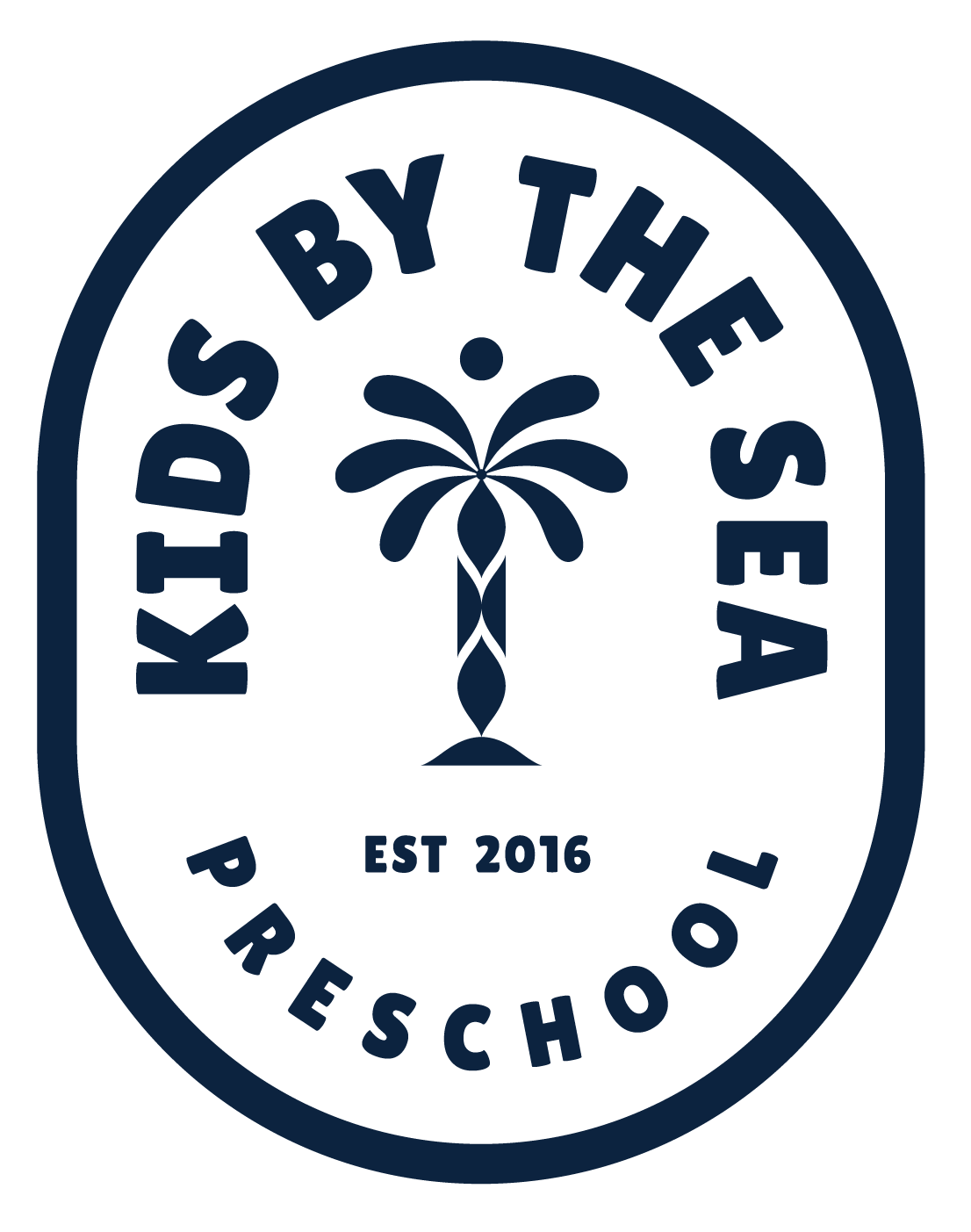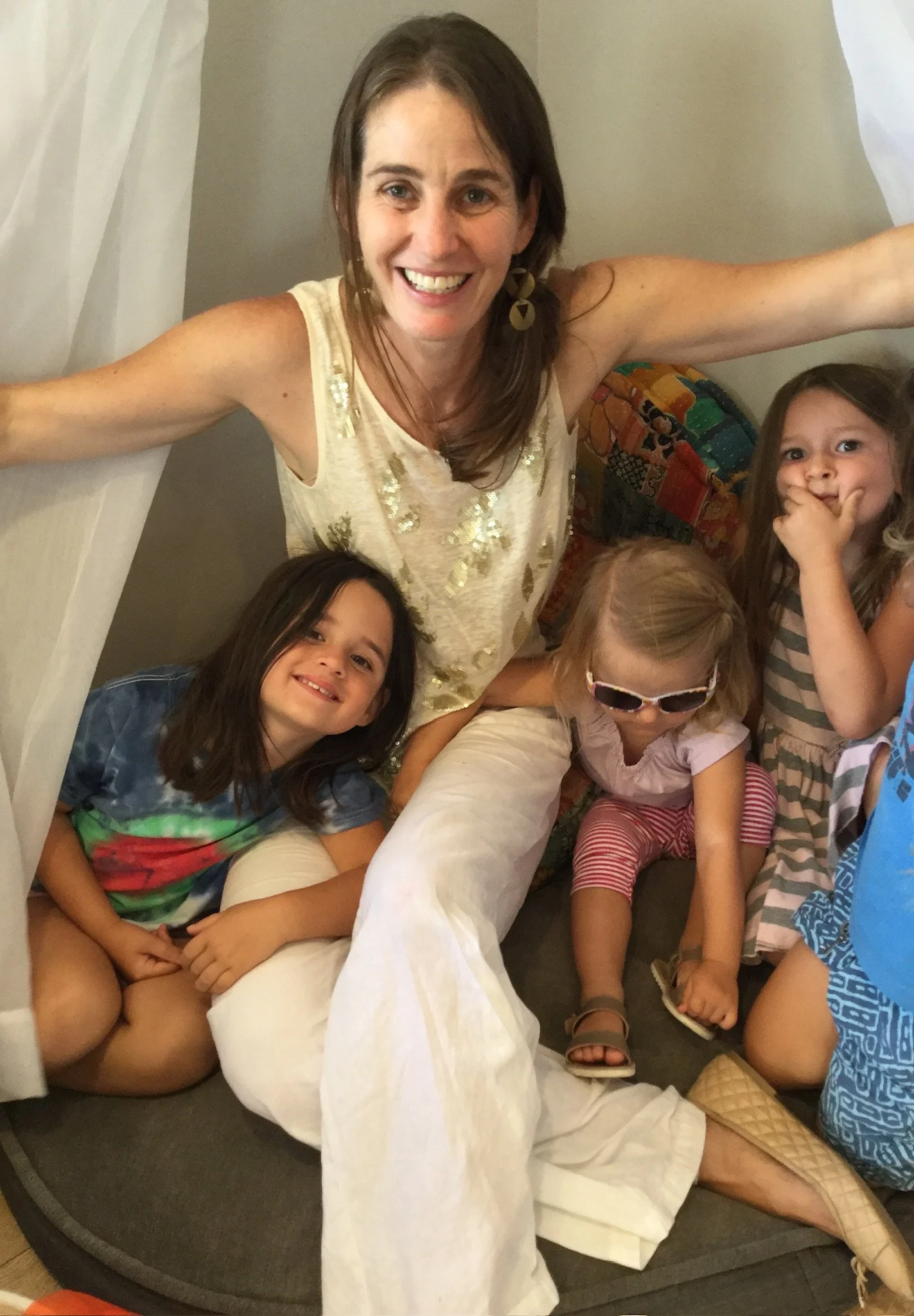Curriculum: Project Based and Play Based Learning + The Outdoor Classroom
At Kids By The Sea, we believe children learn best when we engage their hearts and minds. We want them to leave Kids By The Sea with confidence in their abilities, a great love of learning, and an understanding of the process of asking questions, investigating topics deeply, and creating meaning. The main vehicles we use to promote this type of learning are Project Based Learning and Play.
Curriculum
Project Based Learning
At Kids By The Sea, we believe that to create an ideal preschool curriculum, there must be a quality child directed time, which for us is play, and a quality teacher directed time, which for us is project based learning. Through out a school year, children take part in four projects a year: a project based around building community, a giving project, a building project, and an art-focused project. Project extend over about 6-8 weeks .They begin with a question, are followed by investigations to learn about how to answer the question, and end with a final product and an exhibition where we all celebrate the children’s learning as a community. Each classroom takes part in projects, but they look different depending on the age of the children. Here are a few examples:
Theory & Approaches
At Kids By The Sea, we are influenced most strongly by the theories of Erik Erikson, Jean Piaget, and Lev Vygotsky. The approaches that speak most deeply to us are R.I.E and the Reggio Emilia approach.
ERIKSON
Children are only free to explore and learn when they first feel safe, secure and supported in their environment (both the physical environment and the relationships within that environment).
The social/emotional development of the child is of the utmost importance.
Children in our school are working to develop a basic trust in their environment, a sense of autonomy, and the initiative to go forth into the world.
PIAGET
Children learn best through hands-on-experiences.
Children learn by actively engaging and exploring their environment.
Children have an innate desire to learn.
VYGOTSKY
Children learn within the context of relationships.
Children have the richest learning experiences when their own ideas and inventions, curiosity, initiative, and creativity are encouraged by a supportive adult.
Learning is a lifelong process, not a product. We all continue to learn throughout our lives.
REGGIO EMILIA
Environment as a third teacher: We believe the environment plays an active role in the education of the child. The environment should be ever-changing and changeable based on the interests and developmental level of the children. We also believe that we all learn best, and enjoy places most when they are aesthetically beautiful and inspire creativity.
Role of the teacher: We believe the role of the teacher is first and foremost that of a learner alongside the child. We experience the same delight, wonder, curiosity, research, and critical thinking that a child does. In this way, we can guide the child and serve as a resource as we discover the world along with them. We also believe in the power of observation and documentation as a way of making learning visible.
Role of the child: We believe each child is a unique, amazing being filled with potential and that each child has an innate desire to learn. We have the utmost respect for the individual child (no matter what age or ability level) and work only to build upon their natural curiosity of the world.
Connection to family: We believe in creating authentic relationships built on mutual respect with every family that comes through our door. We believe that, together, we are doing the most important job there is in the world: raising children. We work hard to support each other and believe the child's learning experience is much richer when there is a strong connection between school and home.
R.I.E
We have a deep respect for each child as a unique individual, no matter what the age.
We have a strong belief that each child is perfect just as they are in that moment and a deep trust that they will develop in their own way, in their own time.
Play
At Kids By The Sea, we believe that children learn best through play. Tragically to us, it feels as if we are losing true play from so many facets of childhood. Many preschools will say they are play based, but we think it is important to follow up and ask how they define play and what play looks like in their classrooms. At KBTS, play must be self-directed and self-chosen. So, if a teacher stands up at the front of a classroom and says, “Now we are all going to play this,” it can be fun and valuable, but it isn’t play because it isn’t self-directed or self-chosen. Additionally, when teachers set up centers and children rotate through them, taking part in predetermined activities, these activities can again be fun and valuable, but they are not self-directed and self-chosen so they are not play. Through true play, children learn not only content in specific subject areas like math and language and literacy but also learning dispositions such as creativity, initiative, the ability to make a plan and carry it out, to overcome obstacles, to collaborate, and so much more.
Outdoor Classroom
At Kids By The Sea, it is of utmost importance to us that children spend large amounts of time every single day outdoors. We intentionally design our outdoor spaces to provide many opportunities for children to engage and interact in diverse ways. We believe that, while gross motor play should always be available outside, children should also have the opportunity to engage in other areas. So each area that we have inside, we also have outside- the materials just differ slightly. For example, each classroom has dramatic play, art, building, and sensory areas both inside and outside. Indoors our block areas have wooden unit blocks, and small loose parts such as tiles, little wooden cubes, and fabric samples, while outside the building area has huge wooden blocks, milk crates, and tires. In each area the children are building, but their experience is very different.
Amanda Manger
Owner
I am thrilled to be the owner of Kids By The Sea. The moment I walked into Kids By The Sea, I could tell what a special place it was: a true neighborhood play-based preschool built upon fabulous teachers and families. I have always dreamed of owning a place like KBTS and it has been so exciting to build upon its amazing foundation. It is of utmost importance to me to support families (which is why we offer flexible schedules, form close partnership with families, give you many ways to be involved in our school, and many opportunities to connect). I want KBTS to be a community hub.
As an educator, I am passionate about educating the whole-child, providing deep learning experiences through project work, and giving children the time and space to play. I have lived in Encinitas since 2013 and am so happy to be putting down roots here with my family (my husband Jeremy and my two children, Sydney and Jake). I have worked in early childhood education since 2000, when I graduated from Dartmouth College with a BS in Psychology. I have my Masters in Education from Bank Street College, and have been lucky to work as a teacher and administrator in such diverse places as New York City, Addis Ababa Ethiopia, and Portland, Oregon.
In my spare time, I enjoy reading, traveling, exploring outside (especially at the beach), and spending time with friends and family.






